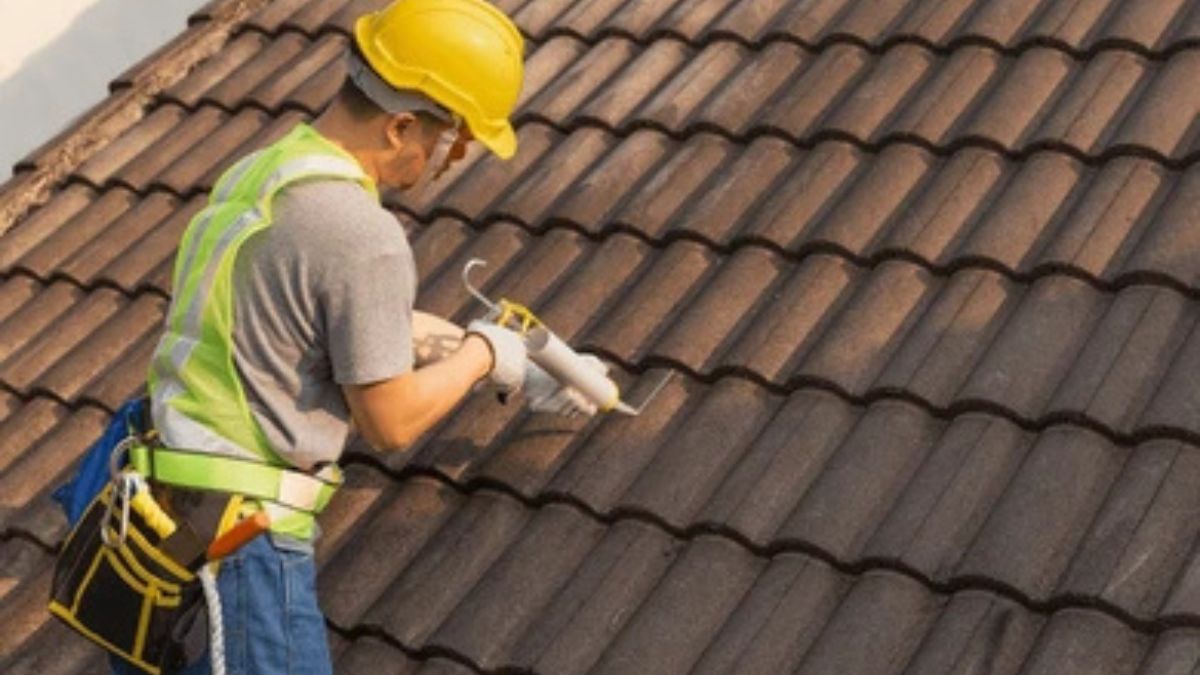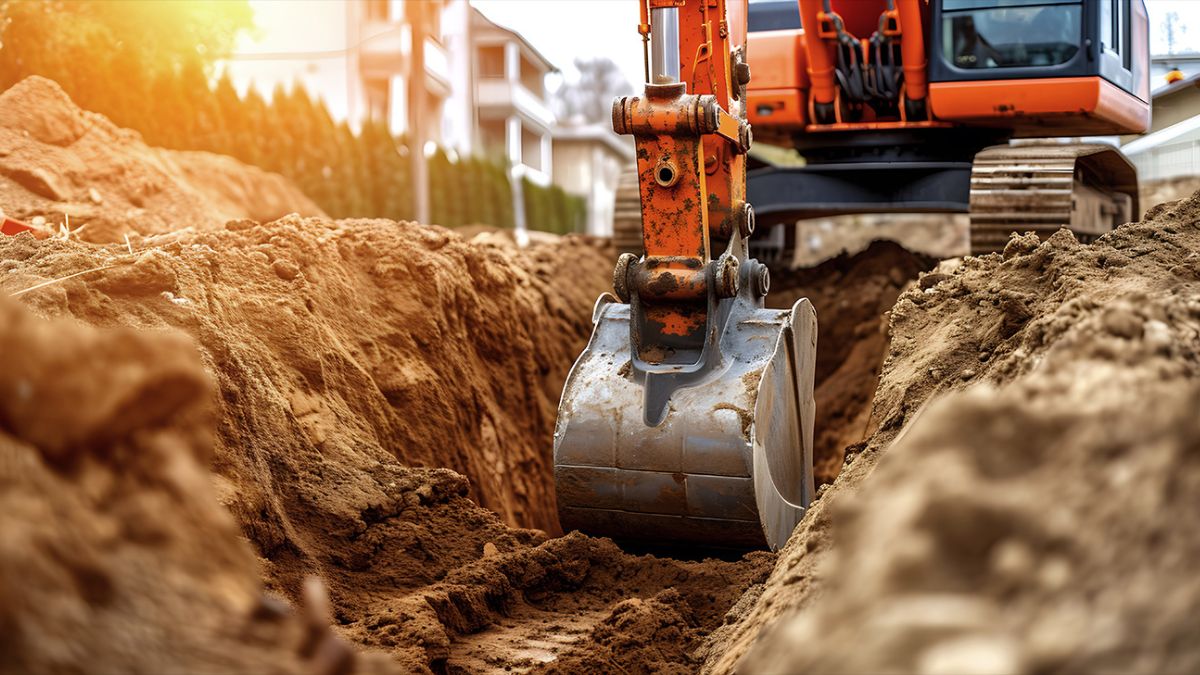CONSTRUCTION
Mastering Roof Maintenance: A Guide for Every Homeowner

Importance of Roof Maintenance
Maintaining the roof correctly is essential to ensure your home’s long lifespan and structural soundness. Regular upkeep not only prevents expensive repairs but also improves the safety and worth of your property. Consistent upkeep can significantly reduce the risk of roof leaks and structural damage. Investing time in roofing maintenance can avert minor issues from becoming major headaches, saving thousands in potential repair costs. Services dedicated to roofing maintenance can provide homeowners with the necessary guidance and support to maintain their roofs effectively, ensuring that your home remains secure from the elements.
Common Roofing Problems
Understanding common roofing problems is essential for timely intervention. Issues such as leaks, missing shingles, and moss growth can escalate quickly if not addressed. Leaks are:
- Often the first sign of trouble.
- Resulting from issues like cracked flashing.
- Broken shingles.
- Inadequate sealing.
If shingles are missing from your roof, they are vulnerable to water damage and need to be replaced immediately.
Seasonal Roof Maintenance Tips
Each season brings unique challenges for roof maintenance. Proactively addressing these can extend the life of your roof and help avoid costly repairs.
- Spring: As the weather warms, it’s a perfect time to clear debris, such as leaves and branches, that may have accumulated over winter. Inspect for damage caused by snow and ice, such as cracked shingles or flashing.
- Summer: With high temperatures, roofs can expand, leading to cracks. Check for any heat-related damage and seal them to prevent potential leaks. Also, consider applying a reflective roof coating to minimize heat absorption.
- Fall: As leaves fall, cleaning gutters and downspouts regularly is crucial to avoid clogging. Clogged gutters may lead to water backup and harm the roof and foundation.
- Winter: Ensure your attic has sufficient insulation to prevent ice dams from forming, which may cause water leaks and damage gutters. Additionally, clear any snow accumulation to reduce the load on your roof.
DIY vs. Professional Roof Inspection
While homeowners can undertake essential inspections, certain damages require professional expertise. Basic DIY inspections can involve looking for signs of wear, like missing shingles, cracked tiles, or visible leaks. Conducting these checks twice a year, especially after severe weather events, is advisable. However, a qualified roofing contractor can spot hidden issues that may not be visible to the untrained eye, such as subtle structural weaknesses or areas where moisture may penetrate. Professionals have specialized tools and knowledge to perform comprehensive inspections. Balancing DIY efforts with professional help to maintain your roof effectively is essential. Regular professional inspections can save homeowners from more severe problems in the future, ensuring minor issues are addressed before they escalate into major repairs.
Costs Involved in Roof Maintenance
The roof maintenance costs can vary based on the type of roofing and the extent of repairs needed. Routine inspections and minor fixes can save substantial amounts by preventing severe damage. Regular professional inspections range from $200 to $400 annually, but this investment can catch minor issues before they become significant problems. More extensive repairs, like replacing shingles or fixing leaks, can vary in cost depending on the severity of the damage. Investing in annual maintenance is a prudent decision that will extend the life of your roof and prevent expensive repairs. Be sure to budget for these regular check-ups as part of your home maintenance routine. Allocate a reserve fund for unforeseen roof repairs to ensure you are financially ready for unexpected roofing issues.
How to Choose a Roofing Contractor
Selecting the right roofing contractor is pivotal in ensuring quality maintenance and repairs. Search for licensed, insured professionals and have positive reviews—research potential contractors by reading customer reviews and checking their ratings on trusted sites. Recommendations from friends and family can also be invaluable. Personal referrals often come with honest experiences and insights.
Additionally, getting multiple quotes and comparing the services offered is wise before deciding. Ask potential contractors for references and look at examples of their previous work. A trustworthy contractor will provide transparent, detailed estimates and offer references upon request. Ensure the contractor guarantees their services so you can be confident their fixes will last.
Routine Roof Maintenance Checklist
Maintaining a routine roof maintenance checklist can help ensure every task is noticed. Frequent inspections help avoid minor problems escalating into significant issues. Here are some essential items to include:
- Inspect shingles for damage or wear. Look for cracked, curled, or missing shingles, allowing water to penetrate your roof.
- Clear gutters and downspouts to prevent clogs. Clogged gutters may result in water overflowing, which could harm your roof and your home’s foundation.
- Inspect the ceiling for any signs of leaks or water damage. Even minor stains indicate a more significant, underlying issue requiring attention.
- Trim overhanging trees and vegetation near the roof. Overhanging branches can scratch your roof and cause shingle damage, while leaves can block gutters.
- Make sure the attic ventilation is adequate to avoid moisture accumulation. Proper air circulation helps to keep a steady temperature and decrease humidity, which can cause mold and mildew to develop.
Preventative Measures to Extend Roof Life
Proactive maintenance is critical to extending the life of your roof. Regular inspections, timely repairs, and proper insulation are crucial. Keeping your gutters clean and ensuring adequate attic ventilation can prevent many common roofing problems. Additionally, consider applying a roof sealant for added protection against the elements. This layer can help prevent minor cracks and leaks, giving your roof an added layer of defense. It’s also beneficial to schedule annual professional inspections to catch potential problems early.
CONSTRUCTION
Sustainable Construction Practices and Their Benefits in Modern Building Projects

Introduction to Sustainable Construction Practices
In today’s construction landscape, sustainable practices are no longer optional—they are essential. More developers and builders, including experts within the ranks of commercial general contractors Sacramento, CA, are integrating sustainable methods due to increasing environmental awareness and rising consumer demand for eco-friendly structures. These practices extend beyond simply reducing a project’s carbon footprint; they represent a commitment to innovative designs that prioritize environmental stewardship alongside economic viability. By embracing sustainable construction, businesses can contribute to mitigating climate change while also enjoying a variety of business benefits. These practices are holistic, enhancing resource efficiency, cutting costs, and ensuring long-term sustainability—all without compromising on the quality or functional utility of the buildings. This exploration will guide you through the multifaceted benefits and challenges of adopting sustainable methods in the construction industry.
Benefits of Sustainable Practices in Construction
Sustainable construction practices offer several benefits, including improved energy efficiency through passive solar design, energy-efficient appliances, LED lighting, and high-performance building envelopes. These practices reduce energy consumption, lower utility bills, and reduce environmental footprint, appealing to environmentally conscious builders and cost-effective consumers. Additionally, sustainable construction practices focus on minimizing waste, a significant concern in traditional methods. Strategies like recycling materials, selecting sustainably sourced resources, and adopting modular construction can help reduce waste, enhance project efficiency, and lower overall costs, as organizations like the Green Building Council recommended.
Materials in Sustainable Construction
The choice of materials is vital in sustainable construction projects. Traditional materials typically involve resource-intensive and environmentally damaging processes. In contrast, eco-friendly alternatives such as bamboo, recycled metals, and precast concrete panels have a lower environmental impact and often excel in durability and aesthetic versatility. Using these materials creates a positive ripple effect in sustainability, as their production, transportation, and integration into construction require fewer resources and generate less waste.
The Impact of Green Buildings on Communities
Green buildings have a positive impact that extends beyond their immediate environments. A recent study on urban development shows that these structures significantly enhance community well-being by improving air quality, reducing the urban heat island effect, and promoting better management of natural resources. Furthermore, green buildings often lead to lower utility costs for occupants, foster a sense of community pride, and set an example for responsible urban development. Ultimately, they help create healthier and more sustainable communities.
Challenges in Implementing Sustainable Practices
While sustainable construction’s advantages are clear, notable challenges can hinder their broader implementation. The upfront costs of eco-friendly materials and technologies can be higher than those of traditional building methods. This financial aspect can deter stakeholders, mainly when budget constraints are strict. Moreover, the lack of widespread knowledge and skills in sustainable practices among construction professionals can present significant barriers, highlighting the need for comprehensive training and education initiatives within the industry.
Innovative Technologies in Sustainable Construction
Technological innovation is at the core of sustainable construction, propelling notable advancements in the planning, construction, and operation of structures. In addition to improving a building’s environmental performance, implementing technology like solar panels, green roofs, and energy-efficient temperature control systems lowers operating costs over the long run. As these solutions become more affordable and available, stakeholders can increasingly embrace sustainable practices more widely.
The Role of Policy and Regulation
Policies and regulatory frameworks are essential for encouraging and accelerating sustainable building techniques. Governments can encourage builders to use eco-friendly practices by enforcing stringent construction rules and providing incentives such as tax exemptions or subsidies for green projects. As stakeholders become more aware of green practices’ moral and economic benefits, sustainable construction is expected to become the rule rather than the exception as these standards develop.
Case Studies: Successful Sustainable Projects
Several global projects highlight the feasibility and advantages of green building practices, leading the way in sustainable construction. One notable example is the Bullitt Center in Seattle, which is renowned as one of the greenest commercial buildings in the world. It features a net-zero energy design and efficient water management systems. These successful projects serve as blueprints for future developments, demonstrating the tangible benefits that sustainable practices can provide to communities and the environment.
Conclusion
Sustainable construction practices are reshaping the building industry’s future, offering a path toward more responsible, efficient, and community-focused development. The benefits of going green are far-reaching and impactful, from energy savings and reduced waste to healthier living environments and long-term economic gains. While challenges such as upfront costs and skill gaps remain, the steady rise of innovative technologies, stronger policies, and inspiring case studies underscore the viability and necessity of sustainable approaches. As the demand for eco-conscious structures grows, industry professionals must stay ahead by embracing sustainable methods as standard practice. Ultimately, integrating sustainability into every construction stage benefits the planet and creates lasting value for businesses, communities, and future generations.
CONSTRUCTION
Maximize Roof Lifespan: Homeowner Maintenance Tips

The Importance of Roof Maintenance
Roof maintenance is essential to house care, which may significantly increase your home’s lifespan and protect it from environmental threats. A roof does more than cover the top of your house; it acts as the primary defense against rain, snow, wind, and sun. Maintaining this essential barrier is crucial for preserving the safety and value of your home. Homeowners can save money on repairs, protect their family’s health, and increase energy efficiency by taking a proactive approach to maintenance. Regardless of the weather, this all-encompassing strategy helps guarantee that your house stays a sanctuary. For those looking to enhance their roof care routine, consulting with the best roofers in Tulsa can provide tailored solutions and expert insight.
Regular Roof Inspections
Regularly conducting inspections is the most critical maintenance task homeowners can undertake. These inspections should be scheduled at least twice a year, preferably during spring and fall, to capture potential damage caused by seasonal weather changes. During an inspection, assess the condition of shingles, flashing, and any roof penetrations, such as chimneys and skylights. It’s also critical to clear away debris like leaves and branches and look for mold growth or water damage indications. Keeping an eye out for sagging areas or loose materials can help you take timely action before minor faults develop into extensive and expensive repairs. By staying vigilant, you can maintain a watertight environment and extend the roof’s life by several years, preserving its function and visual appeal.
Cleaning Gutters: A Simple Yet Crucial Task
Gutters may seem like a secondary aspect of your roofing system, but they are indispensable in protecting your home from water damage. To minimize erosion, leaks, and potential basement flooding, gutters aim to divert rainfall away from your home’s foundation and structural elements. This helps to prevent floods in the base of your home. Regular cleanup involves removing accumulated organic material, such as dirt, twigs, and leaves, to avoid overflowing. Ment. Regular cleanup involves removing accumulated organic material, such as dirt, twigs, and leaves, to prevent overflowing. These blockages can cause water to seep into the roof’s edge, resulting in wood rot and architectural damage. Addressing this keeps your roof and home foundation dry and secure and helps preserve your home’s landscaping by directing water to desired areas.
Identifying and Dealing with Roof Damage
Storms, strong winds, and hail are weather phenomena that can seriously harm roofs. Identifying and rectifying these damages promptly is vital for maintaining roof integrity. After severe weather, inspecting the entire surface for missing shingles, exposed or rusting nails, blistering paint, and other visible signs of damage is crucial. The Family Handyman asserts that quick fixes are necessary to avoid leaks, potentially expensive structural damage, and aesthetic concerns. Utilizing materials that match the existing roof color and texture ensures a seamless repair, helping maintain your home’s aesthetic while securing its defenses against future weather events.
Preparing Your Roof for Harsh Weather
The effects of extreme weather can’t be underestimated, and preparing your roof can mitigate many potential problems. This preparation involves routine checks and strengthening the roof elements to endure adverse conditions such as high winds, ice, and snow. This can include installing additional supports or sealing vulnerable areas with weather-resistant materials. Ensure to remove overhanging tree limbs that could snap and damage the roof during a storm. By preparing your roof for inclement weather, you reduce the likelihood of damage and can rest easier knowing your home is well-protected from the elements.
The Role of Proper Insulation
Insulation plays an unsung hero in the longevity and efficiency of roofing systems. A more stable indoor climate and cheaper energy costs are two benefits of maintaining proper insulation, which reduces heat gain or loss. During winter, adequate insulation keeps warmth inside, reducing the need for constant heating. Conversely, it helps keep your home cooler during sweltering summers. Effective insulation supports family comfort and reduces the wear on roofing materials. Over time, limited exposure to extreme temperatures and moisture-related issues can preserve the roof’s structural elements, adding longevity and reducing maintenance costs.
When to Call in the Professionals
While homeowners can handle many roofing maintenance tasks homeowners can handle, there comes a point when professional assistance is necessary. Your ability to recognize complex issues that require expert assistance is essential to preserving the longevity and health of your roof. Structural damage or extensive leaks may necessitate specialized skills and equipment for proper repair. As noted in professional guides like those from This Old House, professionals can provide safety and quality assurance that DIY repairs often cannot. Engaging with industry experts ensures that issues are identified and resolved effectively, preserving the structural integrity of your roof over the long term.
Sustainability and Roof Longevity
Incorporating sustainability into roofing can benefit the environment and your home’s longevity. Sustainable roofing solutions, such as energy-efficient materials or solar panel installations, reduce the homeowner’s carbon footprint and often increase the roofing system’s durability and lifespan. As options like cool roofs or green roofs gain popularity, they offer cost-saving benefits alongside environmental ones, ensuring your roof continues to protect and serve efficiently over the decades. This holistic approach to roofing contributes to a resilient future for homeowners and communities.
CONSTRUCTION
Maximising Efficiency with Wet Hire Excavator Solutions

In the realm of construction and excavation services, efficiency is not just a goal but a prerequisite for success. One of the key components to achieving this efficiency is choosing the right approach to equipment hire, and specifically the benefits of choosing a wet hire excavator solution. This article is set to explore the fundamental advantages of opting for wet hire options, and how construction projects can harness this approach to streamline operations, reduce downtime, and ultimately improve their bottom line.
The Concept of Wet Hire in Excavation Services
For those unfamiliar with the term, ‘wet hire’ refers to the practice of hiring equipment that comes with its own operator. This is contrary to ‘dry hire,’ which is the rental of equipment alone, without any additional manpower provided. With the complex nature of excavators and their pivotal role in various construction projects, wet hire presents itself as a compelling choice for many contractors.
Expertise and Experience on Demand
When you choose a wet hire excavator, you are not just paying for the machine but also the expertise of an experienced operator. This immediately elevates the level of precision within a project. Experienced operators bring with them extensive knowledge about the intricacies of the machinery, ensuring that all excavations are performed with the highest degree of professionalism and adherence to safety protocols.
Reduced Training and Recruitment Hassles
One of the challenges in the construction industry is finding and training skilled equipment operators. By selecting a wet hire solution, companies are relieved of the burden of recruitment and training. The provider of the wet hire service is responsible for ensuring that their operators keep abreast with the latest industry standards and competencies. This means that construction projects can commence more swiftly, sidestepping the time-consuming steps involved in bringing new hires up to speed.
Minimising Downtime and Maximising Productivity
Every construction project has strict deadlines, and any unplanned downtime can result in financial loss and project delays. The assurance of having a proficient operator can significantly minimise machine downtime. Wet hire operators can identify and resolve minor mechanical issues on site, reducing the need for frequent maintenance stops. Their adept handling of the equipment optimises the machinery’s run-time further maximising productivity on-site.
Adapting to Project Complexity with Ease
Excavation work can vary greatly in complexity, from the nuances of urban construction to the challenges presented by large-scale rural developments. Wet hire excavators come with operators who are often versed in a wide range of conditions and project types, offering versatility to construction firms. This adaptability is particularly valuable when dealing with unexpected ground conditions or navigating complex job sites without a hitch.
Cost-effectiveness of Wet Hire Solutions
While the initial outlay for a wet hire service can seem higher than dry hire, the long-term cost-effectiveness of this option can be significant. By reducing the likelihood of incorrect operation leading to equipment damage or inefficiency, wet hire solutions can ward off additional repair costs. Furthermore, as the hire includes operator fees, companies save on the overhead costs associated with employing an in-house operator, like salaries and benefits.
Risks Mitigation with Wet Hire Excavators
The excavation process carries inherent risks, from damaging underground utilities to potential cave-ins. Wet hire solutions inherently reduce the level of risk by providing operators who can navigate these hazards expertly. Their focused adherence to safety procedures ensures operational compliance and mitigates against the potential for accidents and the associated liabilities.
Compliance with Environmental and Legal Standards
Construction and excavation practices are bound by stringent environmental and legal standards. Wet hire operators are usually well-versed in these requirements and can ensure that work is conducted in a manner that upholds relevant regulations, helping project managers to navigate the maze of compliance without fretting over potential violations.
Streamlining Project Management
With the presence of a dedicated operator, project managers can better focus their attention on overseeing the broader aspects of the construction initiative. Knowing that the wet hire provider manages part of their workforce streamlines various management duties, potentially saving time and allowing for more efficient allocation of human resources.
Choosing the Right Wet Hire Excavator Provider
While the benefits of wet hire solutions are clear, the quality of the service largely depends on the provider. Businesses should seek out wet hire providers with a robust reputation, a fleet of well-maintained and modern excavators, and a transparent approach to customer service.
Conclusion
Wet hire excavator services bring professionalism, efficiency, and peace of mind to construction projects. They signify a comprehensive solution that couples state-of-the-art machinery with skilled operators, culminating in a potent formula for seamless excavation operations. In an industry where every aspect of timing, precision, and compliance is critical, wet hire solutions stand out as a strategic choice for contractors aiming to maximise efficiency and project outcomes.
In summary, the decision to opt for a wet hire excavator is a proactive step towards ensuring the highest degree of efficiency. Thanks to the combination of skilled labour, reduced downtime, and expert management of the equipment, wet hire offers a competitive edge that can substantially influence the success of any excavation project.
-

 TOPIC5 months ago
TOPIC5 months ago7 Expert Tips For Choosing The Best Basement Renovation Companies
-

 BUSINESS1 day ago
BUSINESS1 day agoTop 5 Features of Sowix Online That Every User Should Know About
-

 TOPIC4 days ago
TOPIC4 days agoWhy Greece Katz Martian Has Everyone Talking in 2025
-

 TOPIC6 hours ago
TOPIC6 hours agoTop Features of BetterThisWorld .com You Need to Know About
-

 FINANCE2 months ago
FINANCE2 months agoHow TraceLoans Can Simplify Your Finances
-

 BIOGRAPHY2 months ago
BIOGRAPHY2 months agoFrom Reality Star to Business Mogul: Prince Narula Digital PayPal
-

 TOPIC3 months ago
TOPIC3 months agoExploring Sifangds: The Hidden Gem of Modern Design
-

 TOPIC3 weeks ago
TOPIC3 weeks agoKashito_Toto Explained: What You Should Know in 2024
